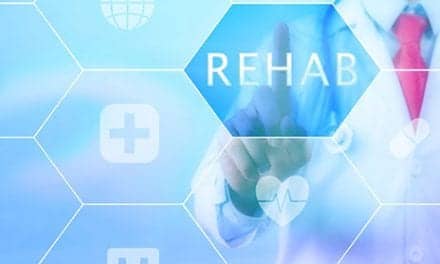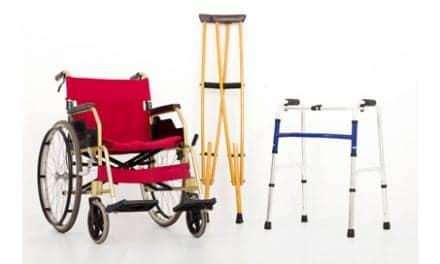
A recent study suggest that the Ipsihand device may be able to help chronic stroke patients recover some control over their paralyzed limbs. Jarod Roland, MD, a medical resident at Washington University School of Medicine, demonstrates the device, which detects electrical activity in his brain and causes his hand to open and close in response to brain signals. (Photo courtesy of Leuthardt lab.)
The Ipsihand, a mind-controlled developed by scientists from Washington University, is designed to help stroke patients retrain their brains to move their hands, which were paralyzed as the result of the stroke.
In a study published in the journal Stroke, the scientists note observing that after learning to use the device, the stroke patients gained some ability to control their hands even when not wearing the brace. The patients—all of whom had moderate to severe paralysis—even showed improvement in their ability to grasp objects.
“We have shown that a brain-computer interface using the uninjured hemisphere can achieve meaningful recovery in chronic stroke patients,” says Eric Leuthardt, MD, a professor of neurosurgery, of neuroscience, of biomedical engineering, and of mechanical engineering & applied science, and the study’s co-senior author, in a media release from Washington University School of Medicine.
The Ipsihand comprises a cap that contains electrodes to detect electrical signals in the brain, a computer that amplifies the signals, and a movable brace that fits over the paralyzed hand. The device detects the wearer’s intention to open or close the paralyzed hand, and moves the hand in a pincer-like grip, with the second and third fingers bending to meet the thumb, the release explains.
To test the device, the study’s co-senior author Thy Huskey, MD, an associate professor of neurology at the School of Medicine and program director of the Stroke Rehabilitation Center of Excellence at The Rehabilitation Institute of St. Louis, recruited moderate to severely impaired patients who experienced a stroke more than 6 months prior to the investigation.
He then trained the patients to use the device at home, encouraging them to use it at least 5 days per week, for 10 minutes to 2 hours each day. Thirteen patients were recruited, and 10 completed the study.
Participants underwent a standard motor skills evaluation at the start of the study and every 2 weeks throughout. The test measured their ability to grasp, grip and pinch with their hands, and to make large motions with their arms. Among other things, participants were asked to pick up a block and place it atop a tower, fit a tube around a smaller tube, and move their hands to their mouths. Higher scores indicated better function.
After 12 weeks of using the device, the patients’ scores increased an average of 6.2 points on a 57-point scale, the release explains.
“An increase of six points represents a meaningful improvement in quality of life,” Leuthardt shares. “For some people, this represents the difference between being unable to put on their pants by themselves and being able to do so.”
Each participant also rated his or her ability to use the affected arm and his or her satisfaction with the skills. Self-reported abilities and satisfaction significantly improved over the course of the study.
How much each patient improved varied, and the degree of improvement did not correlate with time spent using the device. Rather, it correlated with how well the device read brain signals and converted them into hand movements, the release continues.
“As the technology to pick up brain signals gets better, I’m sure the device will be even more effective at helping stroke patients recover some function,” Huskey concludes.
[Source(s): Washington University School of Medicine, Science Daily]




